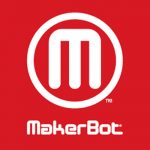In the rapidly evolving landscape of manufacturing and technology, precision printing has emerged as a transformative force poised to redefine how we create and utilize electronic components. At the forefront of this revolution is a groundbreaking innovation presented by Scrona, which harnesses the power of advanced printing techniques to produce intricate electronic circuits with unprecedented accuracy and efficiency.
The Genesis of Precision Printing
The concept of precision printing is not entirely new; however, the advent of digital printing technology has catapulted it to new heights. Traditional methods, such as lithography, require complex machinery and extensive processing steps, making them costly and time-consuming. In contrast, the new generation of printing technology, exemplified by the innovations from Scrona, simplifies the process significantly. By utilizing a micro-electromechanical systems (MEMS) based approach, this technology allows for the printing of conductive inks with resolutions that are 10 to 100 times more precise than standard inkjet printheads.
This novel printing method offers a scalable solution, ranging from single nozzle to 128 nozzle configurations, enabling mass production capabilities that were previously unattainable. The implications of this technology extend far beyond mere convenience; it opens up new avenues for manufacturing at the micron scale, which is critical for industries that rely on high-precision components.
Understanding Conductive Ink
A key component of this precision printing technology is conductive ink, which serves as a medium for transmitting electrical signals. Unlike traditional printing, where the end product is typically a static image on paper, conductive ink enables the creation of functional electronic circuits directly on various substrates, including paper and circuit boards. This capability allows manufacturers to bridge electricity from one point to another, essentially printing the very foundations of electronic devices.
The ability to print electronics in both 2D and 3D formats marks a significant departure from conventional manufacturing methods, where intricate designs are etched and processed through multiple steps. The simplicity of the process – uploading a digital file and printing – transforms the landscape of electronic manufacturing, making it more accessible and efficient.
Sustainability and Practical Applications
One of the most compelling aspects of this precision printing technology is its sustainability. Traditional manufacturing processes often waste significant amounts of material through etching and chemical treatments. In contrast, the new approach minimizes waste by applying materials only where they are needed, resulting in a more environmentally friendly manufacturing process. This precision not only conserves resources but also reduces the reliance on extensive chemical treatments, which can have harmful environmental impacts.
Moreover, the versatility of this technology unlocks a wide array of practical applications across various fields. From semiconductor manufacturing to consumer electronics, and even life sciences and defense technology, the potential use cases are vast. For instance, in the realm of semiconductor packaging, the ability to print conductive traces directly onto components can streamline production and enhance performance. Additionally, the portability of the printing technology allows for on-site production, which is particularly advantageous in sectors such as defense and aerospace, where components may need to be fabricated in remote locations or even in space.
Conclusion: Conductive Printing Makes Circuit Boards Easier to Produce
The revolution in precision printing technology heralded by Scrona represents a paradigm shift in how we think about manufacturing electronic components. By combining high precision, sustainability, and versatility, this technology not only enhances the efficiency of production processes but also democratizes access to advanced manufacturing techniques. As industries continue to explore and integrate these capabilities, we stand on the brink of a new era where the boundaries of what is possible in electronics manufacturing are continually expanded. The future of precision printing is not just about creating better products; it’s about reimagining the entire manufacturing landscape.
Interview by Marlo Anderson of The Tech Ranch.
Get $5 to protect your credit card information online with Privacy.
Amazon Prime gives you more than just free shipping. Get free music, TV shows, movies, videogames and more.
The most flexible tools for podcasting. Get a 30 day free trial of storage and statistics.
Podcast: Play in new window | Download
Subscribe: Apple Podcasts | RSS | More

 Generative AI, also known as generative adversarial networks (GANs), is a revolutionary technology that has the ability to create 3D models from simple prompts or descriptions. This cutting-edge technology is being utilized by a company called
Generative AI, also known as generative adversarial networks (GANs), is a revolutionary technology that has the ability to create 3D models from simple prompts or descriptions. This cutting-edge technology is being utilized by a company called 



